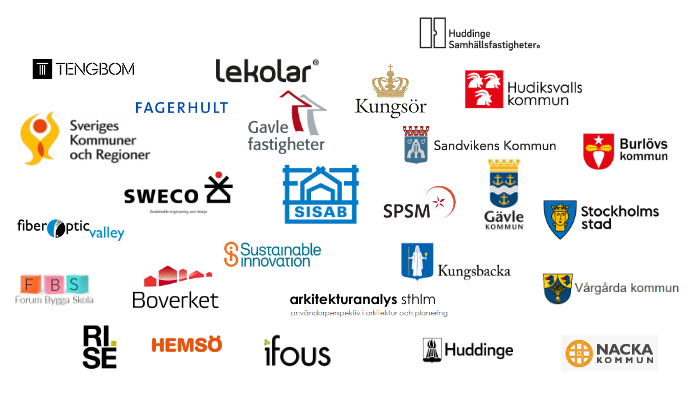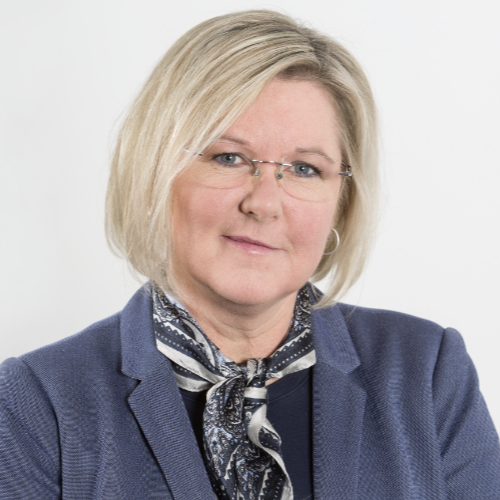Learning Environments of Tomorrow
The University of Gävle has conducted research on learning environments for over a decade, and is now one of the leading universities in Europe in this field. Our research provides new insights into how teaching and learning in schools and preschools can be improved in relation to space design and pedagogical practice.
The Learning Environments of Tomorrow (LET External link.) research program, situated at the University of Gävle, stands as a vanguard in learning environment research, achieving over a decade’s worth of pioneering work. Comprising more than a dozen research projects, supported by a range of funding agencies, LET has delved into issues surrounding successful, safe, and sustainable learning environments. Our extensive network spans across national, Nordic, European and global domains, encompassing collaborative partnerships with various stakeholders within and outside academia, including industry partners, NGOs, and educational institutions.
External link.) research program, situated at the University of Gävle, stands as a vanguard in learning environment research, achieving over a decade’s worth of pioneering work. Comprising more than a dozen research projects, supported by a range of funding agencies, LET has delved into issues surrounding successful, safe, and sustainable learning environments. Our extensive network spans across national, Nordic, European and global domains, encompassing collaborative partnerships with various stakeholders within and outside academia, including industry partners, NGOs, and educational institutions.
Research projects
Within the research program's projects, we are interested in how schools and preschools are utilized, furnished, renovated, designed, and constructed to best support their program. In practice-oriented and theory-generating projects, we analyze how different aspects work together: people, places, organization, and working methods. To see more current research projects, visit the research group ROLE
New concepts for learning environments of tomorrow
How can innovative configurations of lighting and interior design make learning environments more user-friendly and supportive of innovative pedagogy? Over three years, the partners will explore existing knowledge, learn from each other and from research, develop new concepts and configurations of lighting and interior design, and test these in innovative learning environments (ILEs).
Funded by the Knowledge Foundation, in collaboration with Fagerhult, Lekolar and University of Melbourne.
Learning Environments of Tomorrow
The processes from designing to inhabiting a school involve various stakeholders, bringing varying interests and knowledge to interprofessional work. We are interested in these processes and what can be learned from them.
Success factors for functional preschools – a new study of preschools
This project examines success factors in new learning spaces for preschools during a transition period into newly built facilities, taking into account organising and work methods in pedagogical practices.
A test bed for evaluation of LED lighting in the learning environment.
How can new and rebuilt schools better match the pedagogical practicer? An evaluation of recently built schools in the city of Stockholm provides answers.
The creation of social values in school buildings
How can the school's physical environment contribute to creating social values? The aim of the project is to create innovative design and operations solutions that strengthen students' trust in society's institutions. By bringing together learning environment researchers, architects and municipal actors (child and youth administration, security department and real estate company) in an interaction research process, the gap between research and application is bridged through co-production.
Funded by Vinnova, in collaboration with Tengbom architects, Huddinge municipality and Huddinge Samhällsfastigheter AB.
Publications
Some examples of publications produced within the framework of Learning Environments of Tomorrow are presented here.
- Nya lärmiljöer, Frelin & Grannäs 2022
 External link.
External link. - Pedagogisk utvärdering av skolmiljöer, inklusive bilaga, Frelin, Grannäs, Sundholm, Van de Meulebrouck (2022)
 External link.
External link. - Framgångsfaktorer för funktionella förskolelokaler - delrapport, Elm & Magnusson (2021)
 External link.
External link. - Pilotstudie Södra Hemlingby, Frelin, Grannäs (2021)
 External link.
External link. - Vad är de största utmaningarna i nutida lärmiljöer?, de Laval, Frelin, Grannäs (2019)
 External link.
External link.
- Designing and Building Robust Innovative Learning Environments, Frelin, Grannäs (2021)
 External link.
External link. - Transitions in Nordic school environments – an introduction, Frelin, Grannäs & Rönnlund (2021)
 External link.
External link. - Transitions through remodelling teaching and learning environments
 External link., Grannäs, Stavem (2021)
External link., Grannäs, Stavem (2021) - Teachers’ pre-occupancy evaluation of affordances in a multi-zone flexible learning environment – introducing an analytical model
 External link., Frelin, Grannäs (2020)
External link., Frelin, Grannäs (2020) - Spaces of student support: comparing educational environments from two time periods
 External link., Grannäs, Frelin (2017)
External link., Grannäs, Frelin (2017) - Skolans mellanrum: Ett relationellt och rumsligt perspektiv på utbildningsmiljöer
 External link., Frelin, Grannäs (2017)
External link., Frelin, Grannäs (2017) - Highlighting educational support professionals’ indirect contributions to the educational environment
 External link., Grannäs, Frelin (2017)
External link., Grannäs, Frelin (2017) - The production of present and absent presences in education, Frelin, Grannäs (2013)
 External link.
External link.
Partners
We collaborate with other higher education institutions, as well as various companies and organisations, as part of the programme.

International collaborations
Contact

Contact Anneli Frelin for questions about the research programme or read more about her research and see publications in the researcher presentation.

Contact Jan Grannäs if you have questions about the research programme or read more about his research and see his publications in the researcher presentation.
This page was last updated 2024-06-20
